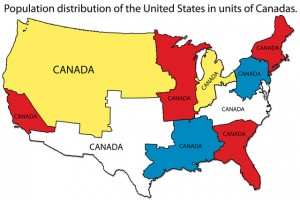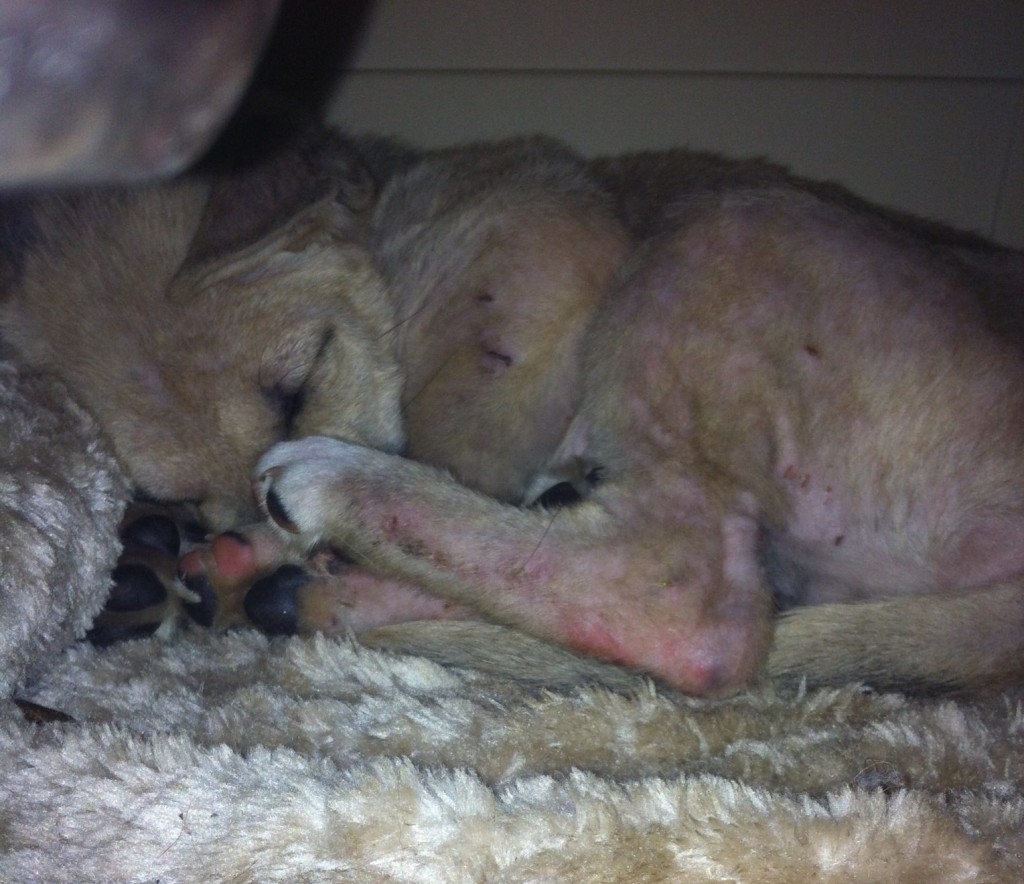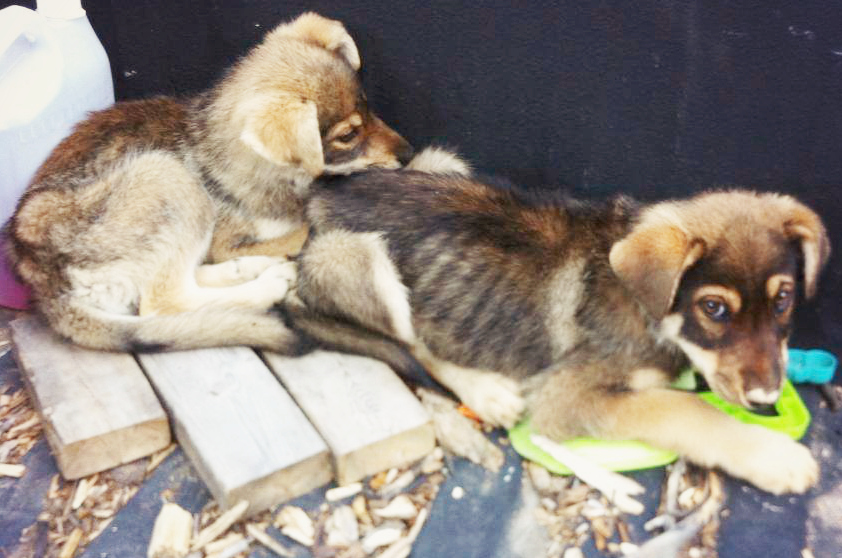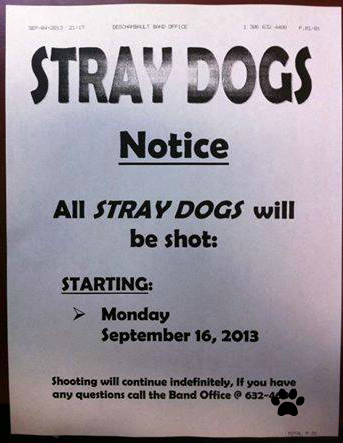The issue of overpopulation in Canada is huge. It is much larger than most people realize because it is hidden. We also see the dogs posted on the dramatic California rescue pages stating the shelter dogs countdown: “This dog has 36 hours to live or it will die!” People pledge and share the photos. But who is saving the dogs of the North that you are not seeing posted on a Facebook page because they are dying too. These dogs are out of sight out of mind and not getting the attention they need to save them.
Our goal is to help you understand why rescuing within Canada is a top priority for us and should be for other rescues in Canada.
This is a TRUE & FALSE discussion to breakdown some arguments on why people rescue internationally and not within Canada.
Import= bringing dogs into Canada to find a home.
-
[/acc_item]
California’s euthanization rate is higher than B.C.'s
True.
But a conveniently overlooked fact is that California holds more people than all of Canada.There are 38 million in California alone and 36 million in Canada. Between BC, Alberta, Saskatchewan, Yukon & NWT (this is our own rescue’s boundaries) there are only about 9 million people (and less than 100,000 of those live in the Yukon & NWT combined where dog overpopulation runs rampant.)
So, with these incredible population differences you would think most of the rescues in our area are helping Canadian dogs. Nope. Over half of the rescues where we are located, on Vancouver Island in British Columbia, import dogs! There are about 2 import rescues (most rescuing from California) for every 1 rescue helping solely within Canada when the numbers clearly show that there are an incredible number of people available to help U.S. dogs and very little to help Canadian dogs, especially those in the North.
Many of our homeless Canadian dogs are killed before they can ever even get to the shelter.We’ve see the various news articles ensuring the public that euthanization rate in shelters here isn’t so bad but it is clear the writers are only aware of shelter dogs and not the dogs that are still being overlooked. We know the dog shoots of the North are not being taken into account into those numbers. Did you know until you just read that line that there are dog shoots happening? While many shelters here may not euthanize healthy dogs, many of our homeless Canadian dogs are killed before they can ever even get to the shelter. You will read in the next section about dog shoots and how some vets euthanize healthy dogs because the shelters are full, especially in areas where the shelters are few and far between but the overpopulation is higher. This is happening in our backyard on this side of the border.
Regardless if the numbers are higher here or elsewhere, doesn’t negate the fact that there are astronomical numbers of dogs being euthanized in Canada. In 2013 alone, Quebec euthanized half a million dogs for the sole reason that they couldn’t find a home. (Source: Animal911, 2014)
Dogs aren’t dying in Canada
False
Now that we’ve offered our assistance, networked and made contacts around Western Canada, we are bombarded with pleas to help. We are constantly turning down dogs needing help and often their alternatives are death. Death by euthanization, death by starvation, death by the bone chilling winter cold or a lowly existence sitting in a shelter for months up North because there is very little adoption base while other dogs wait to get in the few shelters, all while import dogs are brought in to get homes.
It’s not as flashy as the online posts about the dogs with hours to their euthanization date but we see the regular pleas from our fellow rescuers begging for help because another puppy from a litter they couldn’t take because they were already full, just froze to death. This happens all the time. Need an example to make it real? This is a message we received through our networks:
“Here is another litter brought to our attention. They are currently at the owners house in a covered dog house. There are 6 pups now as one has froze there as well.” -A fellow rescuer
What is a dog shoot/cull & where are they happening?
A dog shoot/cull is where dogs are rounded up and shot to control over-population. This is common practice in Canada. Need to see it to believe it? Follow the links.
“While most dogs remain friendly and rarely get aggressive, the ones who do are rounded up and taken out of town and shot. Sometimes, dogs are taken out in groups and culled because there are just too many of them. Few people want to talk about it though. “I feel sad when it happens,” says Kamalapisit but knows it happens at least once a year.”
- British Columbia, Terrace
- British Columbia, Kitwanga
- Northern Alberta
- Manitoba, The Pas
- Manitoba, La Ronge
- Manitoba
- Ontario, Attawapiskak
- Northwest Territories (Click & scroll down to Northwest Territory Dog Shootings)
- Newfoundland, Natuashish
“Part of the horror of this happening is the complacency surrounding the events.”-Turtle Gardens Rescue in Terrace
A Band doing something different in NWT
Have a link to add? Send it to Shannon@IslandDogsRescue.com
Another factor that is often hidden is that when shelters are full, where do the dogs go? In some areas they go to the local vets who hold them for only 72 hours before euthanization if a spot doesn’t open up or they aren’t claimed. This is not something the vets like to do but they have little to no options if they do not have support and placement for the dogs.
What about dogs that are euthanized? Quebec is infamous for it’s gassing of dogs, as well as having very high rates of over population and the largest puppy mills busts in Canadian history.. What happens to the carcasses in the areas where more dogs are being euthanized? If you want to live in a happy rainbow filled bubble, stop reading and don’t click the link… What’s Inside the Dog Foods We Feed
“Dogs and cats euthanized at clinics, pounds and shelters are sold to rendering plants, rendered with other material and sold to the pet food industry. One small rendering plant in Quebec was rendering 10 tonnes (11 tons) of dogs and cats per week from Ontario. The Ministry of Agriculture in Quebec, where a number of these plants are located, advised me that “The fur is not removed from dogs and cats.” and that “Dead animals are cooked together with viscera, bones and fats in 115 C (236 F) for twenty minutes.” One large pet food company in the U.S., with extensive research facilities, used rendered dogs and cats in their food for years and when the information came to light “claimed no knowledge of it.” – Ann Martin, Natural Pet Magazine
These ‘Northern dogs' are not adoptable
False
When reading and watching the above links remember that these are the stories the media chose to focus on. There are many current stories about what is happening and the types of dogs given up. It is not all stray pack dogs needing homes, there are so many more. But we will continue to reiterate that there is not the people-power to get the word out like there is in California, there is not an ‘official’ countdown for their impending death and there are not even very many shelters meaning that many don’t even get a chance.
If it wasn’t possible to rescue from the North and find adoptable dogs then we wouldn’t be in business.
For other rescues: With a little bit of searching and linking to the Northern rescue networks you can find people that can help match you up with dogs that are appropriate for your foster homes needs and experience level. We do it all the time! These are dogs put in an environment that with a little bit of training and patience can show that they are indeed lovely, cuddly and eager for your attention and love.
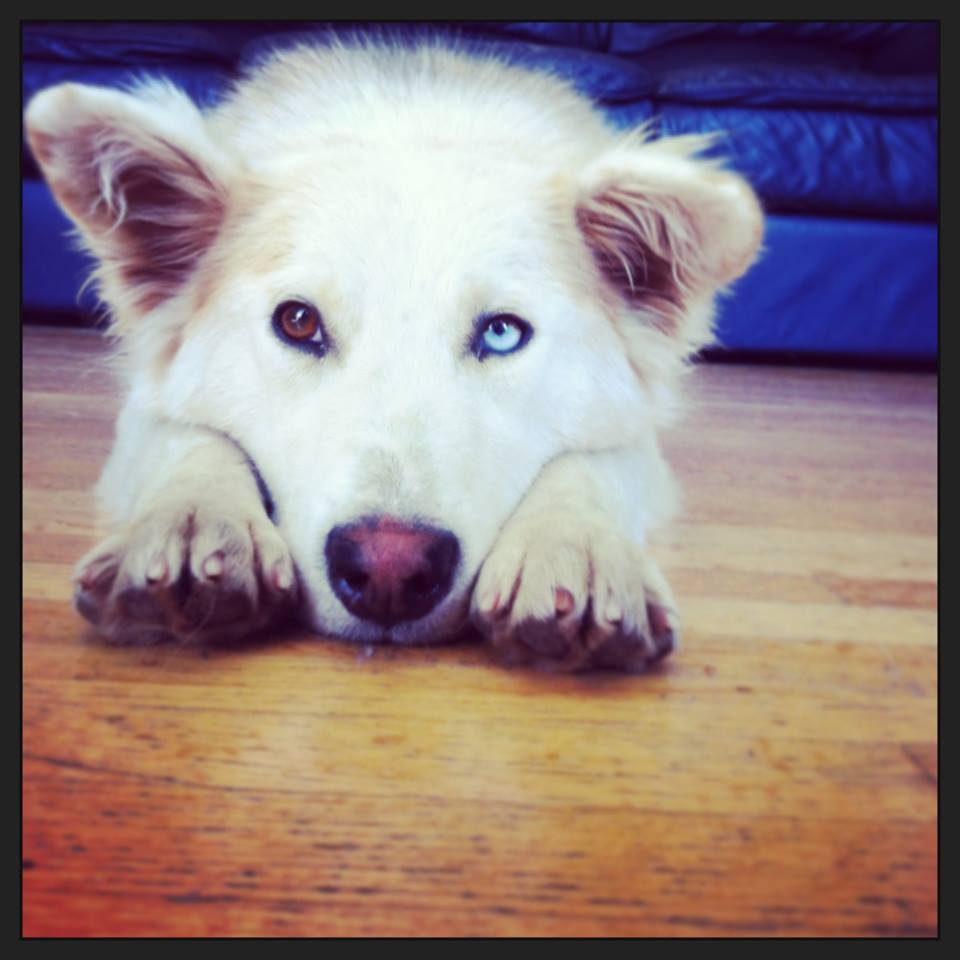
Ketza came to us from a Saskatchewan Reserve as a stray pack dog. She is a sweet & well behaved girl.
“On this particular reserve, we found that all of the dogs, although some timid, were very friendly. The majority of them came right up to us and were VERY happy to get a treat and a pet! There were NO signs of aggression towards us or the locals (barking, lunging, etc.) even though there were a few that were injured.” -Rescuers assessing strays on a Manitoba Reserve, 2013Bringing dogs up from California or down from the North is the same thing
TRUE!
Except there are some important factors other than distance we must consider.
1. Population Density Differences
Being the most populated State in the United States and having a larger population than all of Canada, there are lots of people to help and the surrounding States are available. Now answer this question: What surrounds the North? The North is scarcely populated and there are no surrounding areas that can offer help. There are also few shelters. So what happens to the dogs? Their only option is to come South but truth be told, many never make to a shelter in the first place because the shelters are already full, waiting for someone to help.
2. # of import rescues versus local rescues (about 2 imports for every Canadian rescue on Vancouver Island)
We did our own head count of importing rescues versus local/North rescues that are operating on Vancouver Island. We counted the rescues rescuing within Canada on just one hand, yet there are well over a dozen rescues importing dogs into Canada. We noticed a 10 day span where just 2 rescues brought in 22 dogs! (The numbers of imported dogs is not tracked so it is impossible to know the true total.) Our rescue takes in only 4-5 every 2 months. This means, while some rescues are making a difference, they still can’t keep up with the local demand to help. There are just too many dogs needing help.
3. Resources & Accountability
Another factor to take into account is that when we rescue within Canada we use local resources. We use local vets, local airlines and local people. We know who we are dealing with and we know that our fund-raised dollars are staying where they are needed. “How does this affect the dogs” you might be thinking. Well, the most recent story we heard is an importer that paid for a dog to be spayed in California by a California vet, received the spay certificate and after the dog was placed in a home she had puppies. (The spay procedures removes the uterus making pregnancy impossible.) Even the vets are catching on that Canadian dollars are being sent across the border and with no accountability and no real relationship with the rescue they are working with there is a lot they can get away with, like fake surgeries. Did anything happen to that vet? Probably not, it would be pretty hard from here to make a fuss and would cost dollars that the rescue didn’t have. Will that vet do it again to another import group? Probably.
Well someone must be taking care of local & Northern dogs, the local rescues seem to be doing a fine job of handling it because we never hear otherwise
True, we are doing a fine job but it isn’t enough, there are too many dogs.
In August 2013 we were asked to choose from 4 possibly pregnant homeless dogs. We only had room for 1. Nobody stepped up for the rest. There was no Facebook page counting down their time until death and even if there was a page, what would the time limit say? How long does it take for a dog to starve to death or a puppy to succumb to bone chilling cold our winters bring? Do you want to know? Neither do we, which is why we rescue within Canada because while these dogs might not be euthanized, some face death in much more extreme ways. We see the postings regularly of the people in these areas begging for rescues to help but many rescues are so busy importing they aren’t taking the time to make local connections to facilitate the rescue of these dogs. Many claim they are here to help local as well yet do little to create working partnerships. Please see our last bullet point if you want to help more with local dogs, we will help you if you are willing to rescue to our standards! More than anything we would like to educate, not shame. Remember, even some of us in the rescue have worked with import rescues before we knew better! Learn. Grow. Change. Teach.
The reality is, we can no longer compete with the import rescues because there are so many. Foster homes are scarce and adoptive homes are being taken by import dogs.
“We bring dogs in from NWT and Smither’s almost every other week. It breaks my heart when I hear people tell me they are rescuing a dog from an international rescue because those dogs really need it and our dogs are ok, safe and cared for. I always have in the back of my mind the one I couldn’t bring in. If only just one more could have come this time!”
-Kennel Supervisor for a large BC City Animal Shelter, 2013
But import rescues are only bringing up dogs that people can't get here so they aren't competing
False
In September 2013 we watched a husky brought up from California that had a home waiting for it. But what about Saski, the husky we had in care who had been waiting 6 months for a home? Someone might argue this by saying “But we directly saved a life by taking the California ‘death row’ husky that was going to be euthanized, the one in foster care was already safe!” Our response to that? “Tell that to the the next in line Canadian dog that we said no to that would have filled our empty foster home had our husky been adopted.” We have to see the whole picture to understand why importing is hurting Canadian dogs. The import argument is easy because at first glance, it seems to makes sense and it plays on people heart strings. It’s an easy sell, but with closer inspection its’ full of holes and in the end, greatly limits the options for our own dogs.
We see huskies being brought up yet we always have a Canadian husky in our care. Our BC shelters are full of bully breeds (Pit Bulls etc) which is why there are several rescues operating that only take local bully breeds, yet there are some import rescues that are blindly focused on importing bullies. There are even little dogs looking for homes. The myth that the imported dogs aren’t taking away homes is perpetuated by the fact that the import rescues aren’t looking for dogs here w many of the available Canadian dogs don’t get posted online. That said, we do note that there are a very select few rescues that are focusing on one or two breeds as that breed is their personal passion and there are very few to rescue in Western Canada so they look elsewhere.
But a dog helped is a dog helped no matter where it came from
This is a PARTIAL TRUTH, the statement itself is true but the argument that supports IT IS FALSE.
Obviously the dogs have to come from somewhere. But why are there so many importer rescues (OVER DOUBLE the amount of those rescuing Canadian dogs) when we have homeless dogs right here in Canada in danger of euthanization, or starving or freezing to death? If it doesn’t matter to you where the dogs are from then why not help or adopt Canadian dogs first since there are less people helping here? It just makes sense!
Bringing dogs into Canada is helping the other countries solve their overpopulation problem
False
Is your helping in another country helping solve their problem?
What measures are being taken there to educate, spay/neuter?Canada has organizations in place trying hard to eliminate the overpopulation issue here but need more people on board.
Here are a few preventative projects in Canada:- Canadian Animal Assistance Teams (CAAT) are working in remote areas in Canada as well as internationally, but not to bring in the dogs but to spay and neuter to prevent the issue of overpopulation.
- Alberta Task Force is a spay/neuter for rural Canadian areas
- Dogs Without Names is working to provide contraceptive to homeless dogs in rural Canadian areas
This is not to say that other places do not have plans but while various Canadian rescues are busy saving dogs from California, some rescues in California are busy bringing dogs in from other countries.
“Dogs Without Borders is a non profit 501-c-3 rescue organization based in Los Angeles, California. DWB rescues stray and abandoned dogs from local shelters and as far away as Taiwan and Mexico.”
Don’t believe it, visit their website!Some people might be thinking that we are against helping dogs in California or other locations
False
We hope more than anything that all abandoned dogs are helped regardless of where they are.
What we want you to take from this is that there are so many rescues focusing on dogs across borders while dogs already here in Canada are being forgotten and overlooked over and over again. Here’s a list of places that dogs are being imported from to Vancouver Island: United States, Mexico, Bosnia, Kuwait, Taiwan and Korea. We do hope that these dogs here are helped too but we feel strongly that Canadian dogs should be the top priority.
This issue is too big & I am not with a rescue so there is nothing I can do
False
You can share this message and help promote the dogs and cats from the North and within that need homes and are needing a rescue to take them in. By sharing adoptable dogs from rescues that rescue within Canada you are helping the chances of that dog be adopted which will open up a space so the rescue can take on a new dog in need. Every little bit counts. These are the issues that people don’t talk about that need to be shared, for the Canadian dog’s sake, please share them!
But I own an imported dog!
We are not here to shame you, heck, even a few of us used to work with import rescues until we learned about what was going on here. It’s never too late to start speaking up and sharing what you’ve learned. We are speaking out and we would love to see you speak up too. Remember, it’s not personal and it’s not about us, it’s about bringing awareness to the dogs in Canada that need our help.
Are you rescuing from California or another country and interested in helping in Canada?
We hope this one is TRUE!
It’s not a showy as rescuing dogs with countdown tickers and it can be more work but we guarantee you will still be saving a life. We are happy to talk with you about where to start, who to make contacts with, what rescue pages to join and what lists you need to join. Talk to us! By working together we can save more here.
Vancouver Island rescues that rescue only within Canada:
- Vancouver Island Dogs Rescue Society (Any size, mostly medium & larger, special focus on Northern breeds)
- Broken Promises (Anything- cats, dogs, birds, gerbils etc)
- HugABull (Bully Breeds)
- Bully Buddies (Bully Breeds but open to others)
- Greater Victoria Animal Crusaders
- Big Heart Rescue
- Second Chance (Small dogs)
- Little Paws (Small dogs)

